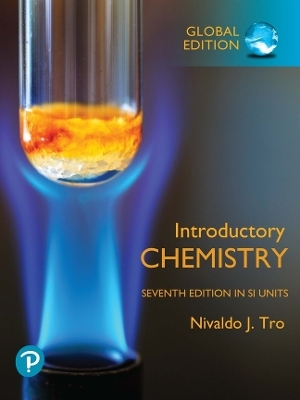
Surface Analysis – The Principal Techniques 2e
Wiley-Blackwell (Hersteller)
978-0-470-72158-2 (ISBN)
- Keine Verlagsinformationen verfügbar
- Artikel merken
John C. Vickerman BSc in Chemistry (Edinburgh), Ph.D. in Surface Chemistry (Bristol), DSc (Bristol). Predoctoral fellowships at the Universities of Perugia and Rome, postdoctoral fellowships at the University of Bristol and the Technical University of Eindhoven. Sabbatical study periods at the University of Munich, the Free University of Berlin and Pennsylvania State University. Dr Ian Gilmore, Surface and Nano-Analysis, National Physical Laboratory, Teddington, UK Ian is a Principal Research Scientist in the Surface and Nano-Analysis Research team and joined NPL in 1991. His research has a focus on the analysis of complex molecules at surfaces. Recent research has led to the development of a novel new variant of static static SIMS called gentle-SIMS or G-SIMS, He received a degree in Physics from the University of Manchester in 1991 and a PhD from the University of Loughborough in 2000. Ian is a Fellow of the Institute of Physics a member of the EPSRC College and a member of the American Vacuum Society.
List of Contributors. Preface. 1 Introduction (John C. Vickerman). 1.1 How do we Define the Surface? 1.2 How Many Atoms in a Surface? 1.3 Information Required. 1.4 Surface Sensitivity. 1.5 Radiation Effects - Surface Damage. 1.6 Complexity of the Data. 2 Auger Electron Spectroscopy (Hans Jorg Mathieu). 2.1 Introduction. 2.2 Principle of the Auger Process. 2.3 Instrumentation. 2.4 Quantitative Analysis. 2.5 Depth Profile Analysis. 2.6 Summary. References. Problems. 3 Electron Spectroscopy for Chemical Analysis (Buddy D. Ratner and David G. Castner). 3.1 Overview. 3.2 X-ray Interaction with Matter, the Photoelectron Effect and Photoemission from Solids. 3.3 Binding Energy and the Chemical Shift. 3.4 Inelastic Mean Free Path and Sampling Depth. 3.5 Quantification. 3.6 Spectral Features. 3.7 Instrumentation. 3.8 Spectral Quality. 3.9 Depth Profiling. 3.10 X-Y Mapping and Imaging. 3.11 Chemical Derivatization. 3.12 Valence Band. 3.13 Perspectives. 3.14 Conclusions. Acknowledgements. References. Problems. 4 Molecular Surface Mass Spectrometry by SIMS (John C. Vickerman). 4.1 Introduction. 4.2 Basic Concepts. 4.3 Experimental Requirements. 4.4 Secondary Ion Formation. 4.5 Modes of Analysis. 4.6 Ionization of the Sputtered Neutrals. 4.7 Ambient Methods of Desorption Mass Spectrometry. References. Problems. 5 Dynamic SIMS (David McPhail and Mark Dowsett). 5.1 Fundamentals and Attributes. 5.2 Areas and Methods of Application. 5.3 Quantification of Data. 5.4 Novel Approaches. 5.5 Instrumentation. 5.6 Conclusions. References. Problems. 6 Low-Energy Ion Scattering and Rutherford Backscattering (Edmund Taglauer). 6.1 Introduction. 6.2 Physical Basis. 6.3 Rutherford Backscattering. 6.4 Low-Energy Ion Scattering. Acknowledgement. References. Problems. Key Facts. 7 Vibrational Spectroscopy from Surfaces (Martyn E. Pemble and Peter Gardner). 7.1 Introduction. 7.2 Infrared Spectroscopy from Surfaces. 7.3 Electron Energy Loss Spectroscopy (EELS). 7.4 The Group Theory of Surface Vibrations. 7.5 Laser Raman Spectroscopy from Surfaces. 7.6 Inelastic Neutron Scattering (INS). 7.7 Sum-Frequency Generation Methods. References. Problems. 8 Surface Structure Determination by Interference Techniques (Christopher A. Lucas). 8.1 Introduction. 8.2 Electron Diffraction Techniques. 8.3 X-ray Techniques. 8.4 Photoelectron Diffraction. References. 9 Scanning Probe Microscopy (Graham J. Leggett). 9.1 Introduction. 9.2 Scanning Tunnelling Microscopy. 9.3 Atomic Force Microscopy. 9.4 Scanning Near-Field Optical Microscopy. 9.5 Other Scanning Probe Microscopy Techniques. 9.6 Lithography Using Probe Microscopy Methods. 9.7 Conclusions. References. Problems. 10 The Application of Multivariate Data Analysis Techniques in Surface Analysis (Joanna L.S. Lee and Ian S. Gilmore). 10.1 Introduction. 10.2 Basic Concepts. 10.3 Factor Analysis for Identification. 10.4 Regression Methods for Quantification. 10.5 Methods for Classification. 10.6 Summary and Conclusion. Acknowledgements. References. Problems. Appendix 1 Vacuum Technology for Applied Surface Science (Rod Wilson). A1.1 Introduction: Gases and Vapours. A1.2 The Pressure Regions of Vacuum Technology and their Characteristics. A1.3 Production of a Vacuum. A1.4 Measurement of Low Pressures. Acknowledgement. References. Appendix 2 Units, Fundamental Physical Constants and Conversions. A2.1 Base Units of the SI. A2.2 Fundamental Physical Constants. A2.3 Other Units and Conversions to SI. References. Index.
| Erscheint lt. Verlag | 27.3.2009 |
|---|---|
| Verlagsort | Hoboken |
| Sprache | englisch |
| Maße | 182 x 251 mm |
| Gewicht | 1640 g |
| Themenwelt | Naturwissenschaften ► Chemie |
| Technik ► Maschinenbau | |
| ISBN-10 | 0-470-72158-8 / 0470721588 |
| ISBN-13 | 978-0-470-72158-2 / 9780470721582 |
| Zustand | Neuware |
| Haben Sie eine Frage zum Produkt? |
aus dem Bereich


